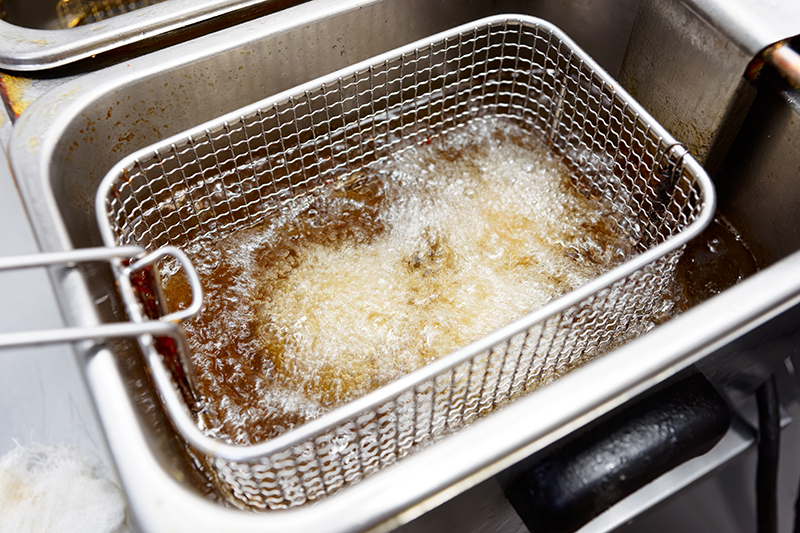Guest blog by Linda Bonvie
If you’ve been following the saga of trans fats – the artery-clogging substances created by partially hydrogenated oils (PHOs), which were once a staple in cookies, crackers, pastries and shortenings — you no doubt know that the FDA several years ago finally got around to developing a slow-motion plan to remove them from the food supply. But despite the fact that doctors, regulators, nutritionists and everyone else is in agreement that the trans fats created by PHOs are killers, the FDA has shockingly given the food industry until 2021 to stop shipping foods that contain them to stores.
Of course, many products have already been reformulated, including the one that launched the trans-fat ship back in 1911, Crisco, which changed its ingredients from partially hydrogenated vegetable oil to soybean oil and “fully hydrogenated palm oil” – a process that produces no trans fats. But is that any healthier?
The excerpt below from “A Consumer’s Guide to Toxic Food Additives: How to Avoid Synthetic Sweeteners, Artificial Colors, MSG, and More,” by Linda and Bill Bonvie (release date March, 2020, Skyhorse Publishing), should give you an idea of how this PHO “ban” is playing out and what fats are taking its place. Hopefully this will inspire you to avoid processed foods in your diet as much as you possibly can.
The interesting case of interesterified fats
What appears to be taking the place of PHOs are oils that have been altered, either chemically or enzymatically, known as interesterified (IE) fats. Interesterification basically transforms an oil into a solid. And interestingly, fats that are changed in this manner behave a lot like partially hydrogenated oils do in terms of texture and allowing products to have a longer shelf life.
If you’re thinking that sounds suspiciously unhealthy, so are a lot of scientists and researchers. In fact, the conclusion that most experts reach on this ingredient is that we know way too little about the effects it may have on our health – especially heart health. To quote Yogi Berra, it sounds like “déjà vu all over again.”
The studies that have been published on IE fats range from conclusions that the “impact on cardiovascular health is unknown,” to “consumption of interesterified fats may be the cause of the continuous increase in cardiovascular deaths in the United States,” to findings that IE fats raise total cholesterol and even fasting blood glucose by nearly 20 percent.
And while many consumers may have become savvy in looking for partially hydrogenated oils on food labels, as far as IE fats are concerned, there appear to be no specific rules on how they are to be listed. Such fats can appear on ingredient labels as “vegetable oils,” “fully hydrogenated oils,” “Palm oil,” “palm kernel oil,” “high stearate” or “stearic rich” fat. As a group of independent researchers commented, those who “rely on and trust regulatory bodies to protect public health are ultimately the ones who may suffer potential health risks from this lack of transparency.”
But there are those who have another idea for you where fats are concerned, an up-and-coming product that also brings back memories, this time of a fat replacement that was the stuff of bathroom humor back in the 1990s.
‘Have your cake and eat it,’ but do you really want to?

The search for a “fat” with zero calories is the stuff that Big Food’s dreams are made of. And industry thought it had that nailed decades ago when olestra debuted in fat-free WOW and Pringles chips.
But it didn’t take long for adverse reaction reports to start coming in, many collected by the consumer group Center for Science in the Public Interest, with people blaming olestra for horrible cramps, terrible diarrhea, and unspeakable smells.
Now comes EPG, a.k.a. esterified propoxylated glycerol, “the revolutionary new” fat replacement that, just like olestra, passes through the body virtually unabsorbed, and voila, results in over 90 percent fewer calories being metabolized than if a real fat were used!
Of course the company behind this brainchild of caloric reduction, Epogee, claims that they have “better chemistry,” and learned from Procter & Gamble and its olestra experience. With EPG we’re told you can “have your cake and eat it” without the fear of anal leakage.
While that is a comforting thought, both the history of no-cal fat replacements and the origins of EPG aren’t quite as reassuring.
Beginning its journey to your plate back in 1989 when Arco Chemical obtained a patent for a process to make further use of its “workhorse chemical” propylene oxide (which is also a player in the manufacture of such diverse things as furniture foams, car seats, waterproof clothing and even the fumigation of nuts), EPG is now poised to be incorporated into foods ranging from baked goods to ice cream to sauces, nut butters and pasta.
Of course, the FDA would have to approve the use of this chemically altered fat ingredient, right? Well, not exactly.
By taking advantage of what’s been called the “fast track” to GRAS, and using the exact same loophole as for olestra, all that the applicant needed was to have a company official sign off on a “GRAS exemption claim” that it has determined EPG is “generally recognized as safe based on scientific procedures” – with no filed petition or FDA analysis of those scientific procedures required.
The unfinalized proposed rule that allows this has been the subject of an ongoing lawsuit first filed by the Center for Food Safety back in 2014.
So despite all the headway made in the removal of PHOs from the food supply, it seems to perfectly illustrate the proverbial one-step-forward and two-steps-backwards principal that is so often characteristic of hard-fought reforms to eliminate harmful additives from processed foods.


